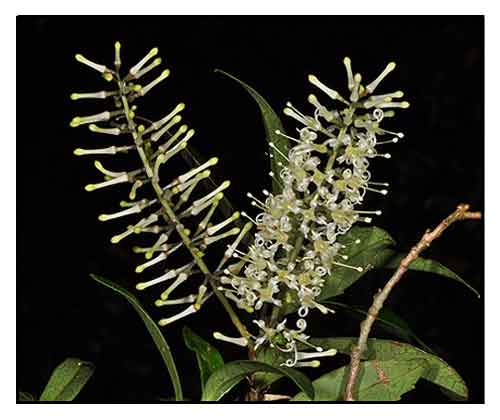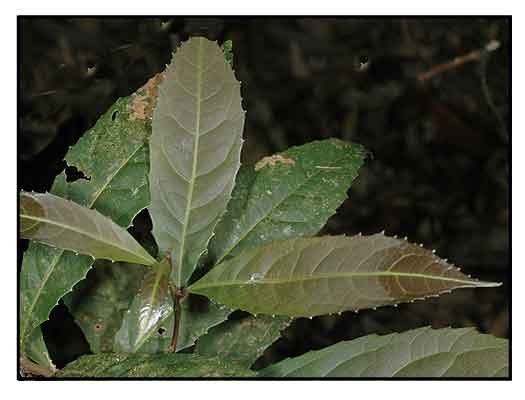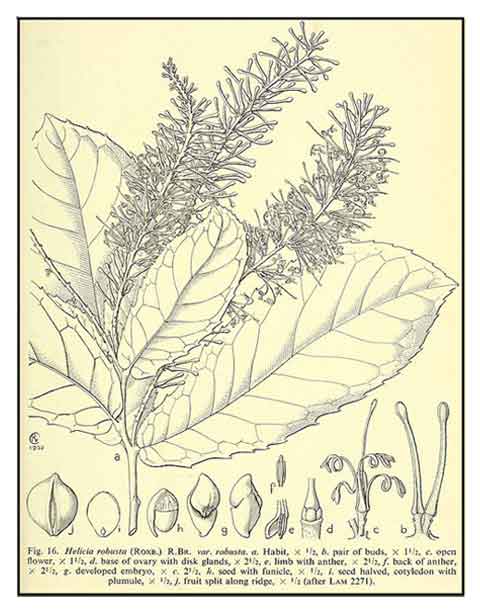
Family • Proteaceae
Salimai
Lakot
Helicia robusta (Roxb.) R.Br. ex Wallich
ROBUST HELICIA
| Scientific names | Common names |
Helicia robusta (Roxb.) R.Br. ex Blume |
Gulattan (Ifugao) |
| Roupala robusta Roxb. | Lakot (Tag.) |
| Accepted infraspecifics | Malaantigar (S.L.Bis.) |
| Helicia robusta var. integrifolia (Elmer) Sleumer | Matabato (Bis.) |
| Helicia robusta var. robusta | Salimai (Manobo) |
| Saliomai-lakihan (Tag.) | |
| Salinsi (Tag.) | |
| Robust helicia (Engl.) | |
| Helicia robusta (Roxb.) R.Br. ex Blume is accepted. KEW: Plants of the World Online | |
| Other vernacular names |
| INDONESIA: Kayu maributan, Kendung, Tidu, Watutu, Tulo-tulo. |
| KANNADA: Tegalamugu, Tegelamugu. |
| MALAYSIA: Jaring jaringan jawa, Medang keladi, Medang layang. |
| MIZO: Sialhma, Pasal-taka-za. |
| MYANMAR: Tauk yat. |
| THAILAND: Duei, Hang krakok, Niang-Krup, Meat khon. |
| VIETNAM: Cheo thui lon. |
Botany
Constituents Properties Studies Availability |
December 2022
![]()
 |
| PHOTOS / ILLUSTRATIONS |
| IMAGE SOURCE: Photo: Proteaceae- Helicia robusta / Inflorescences / Copyright © 2013 by P.B. Pelser & J.F.Barcelona (contact: [email protected]) [ref. DOL76341] / Non-Commercial Use / click on image to go to source page / Phytoimages.siu.edu |
| OTHER IMAGE SOURCE: Photo: Proteaceae- Helicia robusta / Shoot with younger leaves / Copyright © 2013 by D.L. Nickrent (contact: [email protected]) [ref. DOL76341] / Non-Commercial Use / click on image to go to source page / Phytoimages.siu.edu |
| OTHER IMAGE SOURCE: Illustration / Helicica robust [502922 ] / Flora Melesiana : Vol 5 (1955-1958) / contributed by New York Botanical Garden , USA / PlantIllustrations.org |
Additional
Sources and Suggested Readings |
• |
DOI: It is not uncommon for links on studies/sources to change. Copying and pasting the information on the search window or using the DOI (if available) will often redirect to the new link page. (Citing and Using a (DOI) Digital Object Identifier) |
| List of Understudied Philippine Medicinal Plants |
• |
 |

 Gen info
Gen info Distribution
Distribution Parts used
Parts used